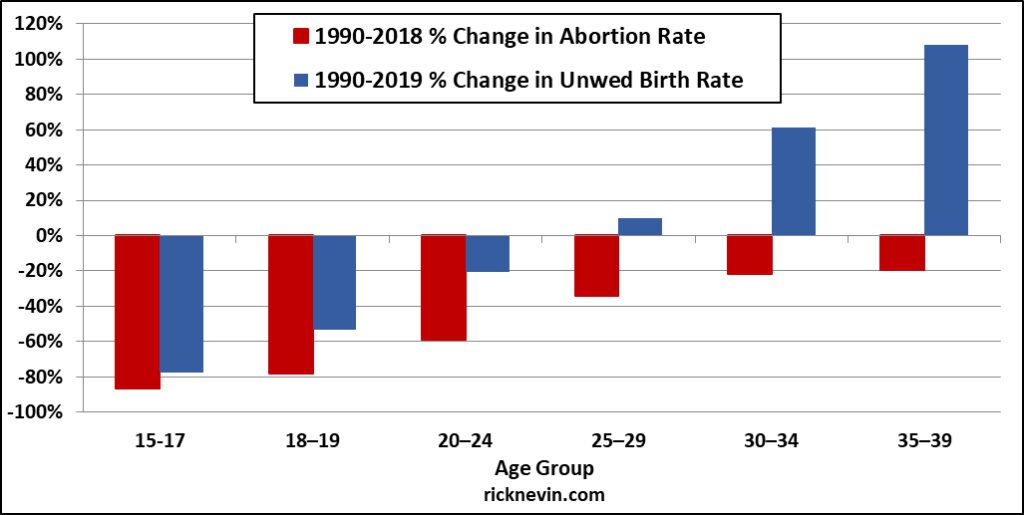Abortion Will Be Rare
Nevin (2000) found that lead exposure trends explained 90% to 96% of temporal variation from the 1950s through 1996 in unwed conception rates (unwed births and abortions) for ages 15-17, 18-19, and 20-24. The best-fit lag for each age group was consistent with the impact of lead exposure on neurodevelopment in the first years of life: A lag of 17 years for ages 15-17, 20 years for ages 18-19, and 24 years for ages 20-24. Unwed conception rates in this analysis combined abortion rates by age plus unwed birth rates for the next year to estimate rates by conception year.
Another 22 years of data are now available for abortion rates (through 2017 and 2018) and unwed birth rates (through 2015 and 2016-2019). From 1996 to 2018, unwed conception rates fell 78% for ages 15-17, 62% for women ages 18-19 and 37% for ages 20-24, tracking earlier preschool blood lead trends. In 2018, the unwed conception rate (unwed births plus abortions) for ages 15-17 was lower than the unwed birth rate was for this age group in the late-1950s.
Earlier blood lead trends have shown remarkable predictive power for ongoing declines in unwed conception rates. This is the same evidence of causation demonstrated by ongoing declines in burglary and robbery rates in the USA, Canada, Britain, and Australia.



The fall in unwed teen conception rates has been associated with a convergence in unwed birth and abortion rates by race. This is the same racial convergence pattern seen in youth arrest and incarceration rates, tracking the earlier racial convergence in elevated preschool blood lead prevalence.


The fall in unwed teenage conception rates reflects large declines in abortion and unwed birth rates. For women ages 20-24, the unwed conception rate decline is mostly due to falling abortion rates.



For women ages 25-39, unwed birth rates have increased since 1990 and abortion rates have declined by far less than the fall recorded by teenagers. This is the same shift to older ages seen in arrest and incarceration rates, reflecting ongoing effects of birth year trends in preschool lead exposure.

The CDC reports that 58% of unwed births from 2006-2010 were to women in cohabiting relationships, up from 41% in 2002, and about half of births to cohabiting unwed women were planned. The CDC notes that planned births suggest more social and financial support within a cohabiting union, and that measures of father involvement are similar among married and cohabiting fathers. Changing societal attitudes about planned unwed births in cohabiting relationships might result in unwed birth rates for women in their 30s that remain higher than unwed birth rates for that age group in the early-1970s.
In the case of abortion, it appears that the steep decline in the unwed teen abortion rate could cascade through older age groups over the next two decades, as birth years with more severe lead exposure recede further into the past. In that case, regardless of how you feel about this issue, abortion will be rare.
